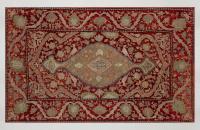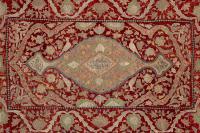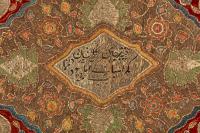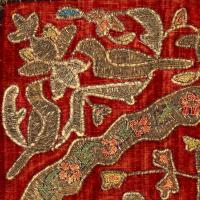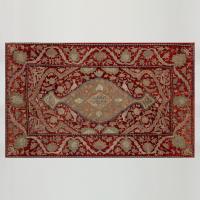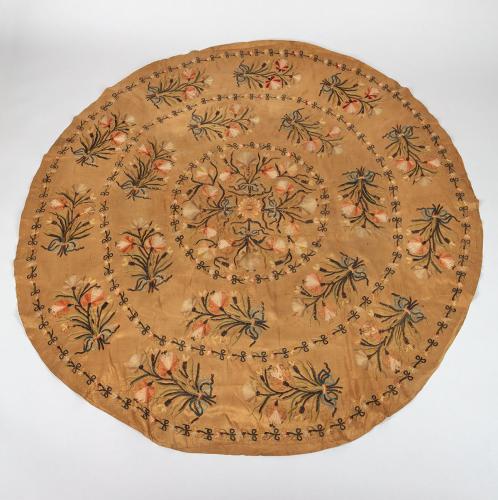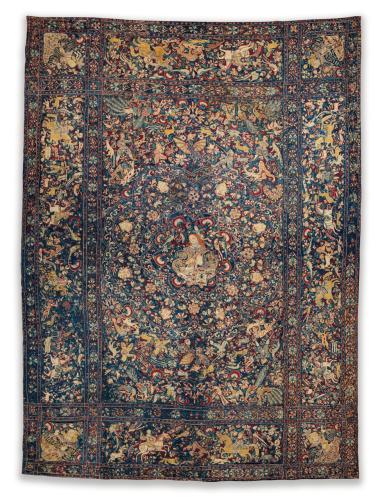
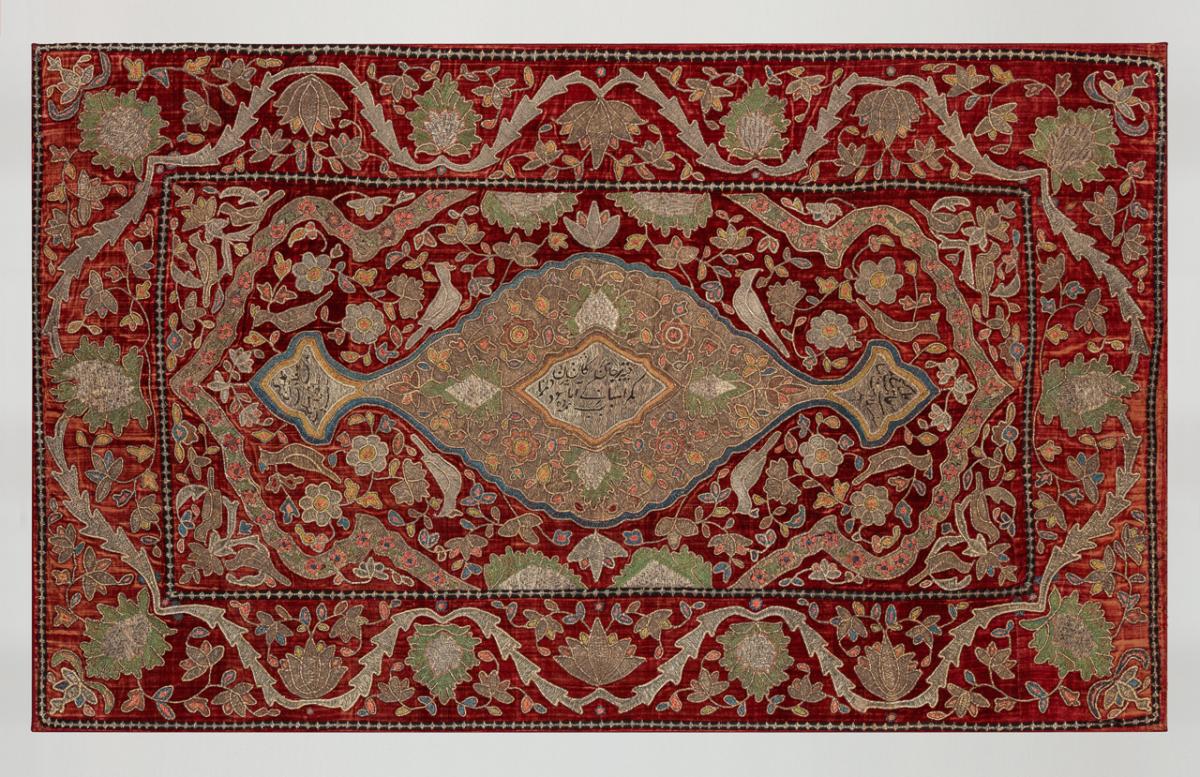
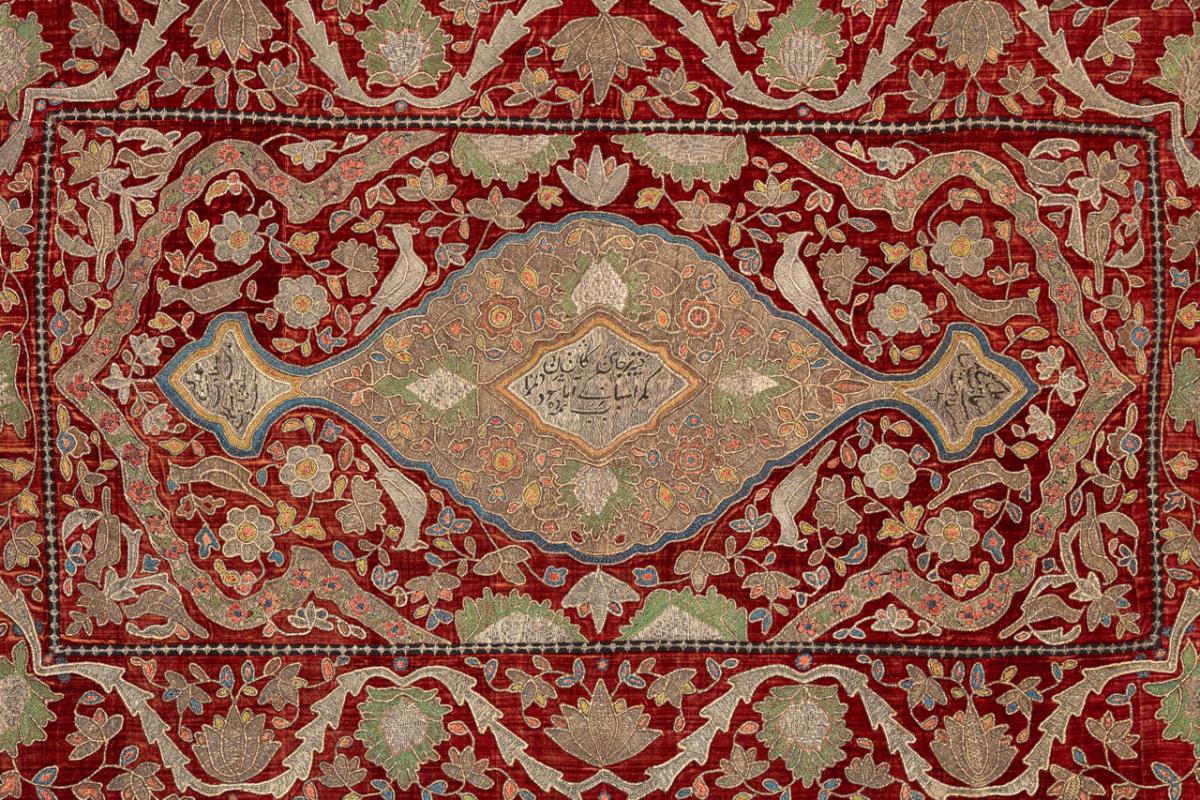
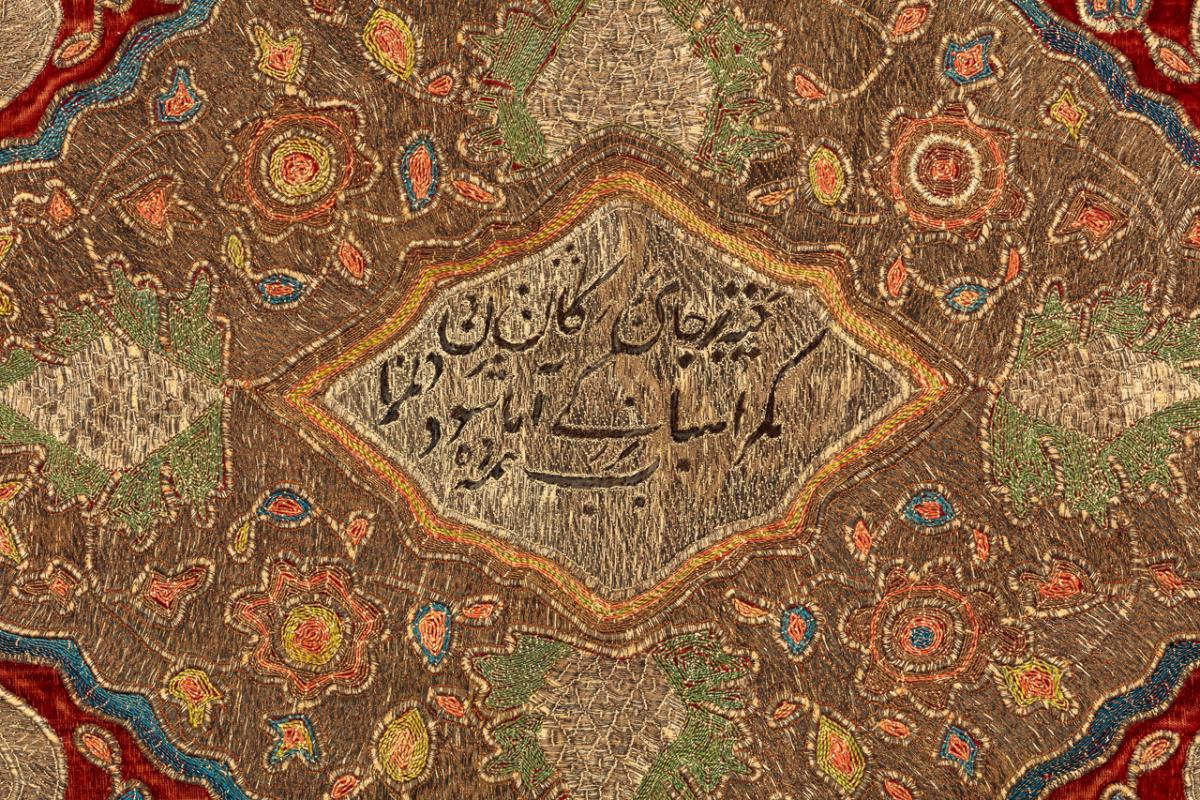
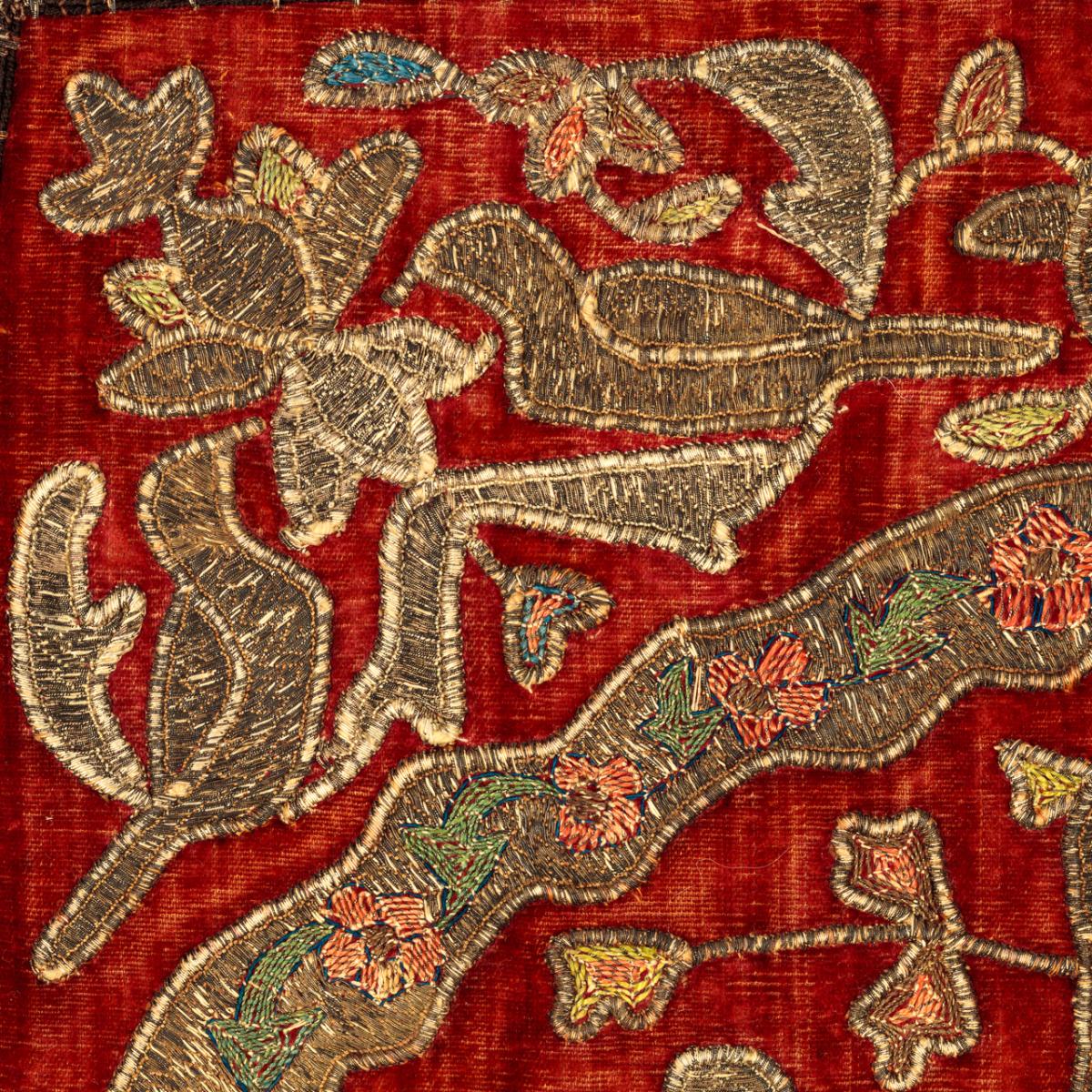
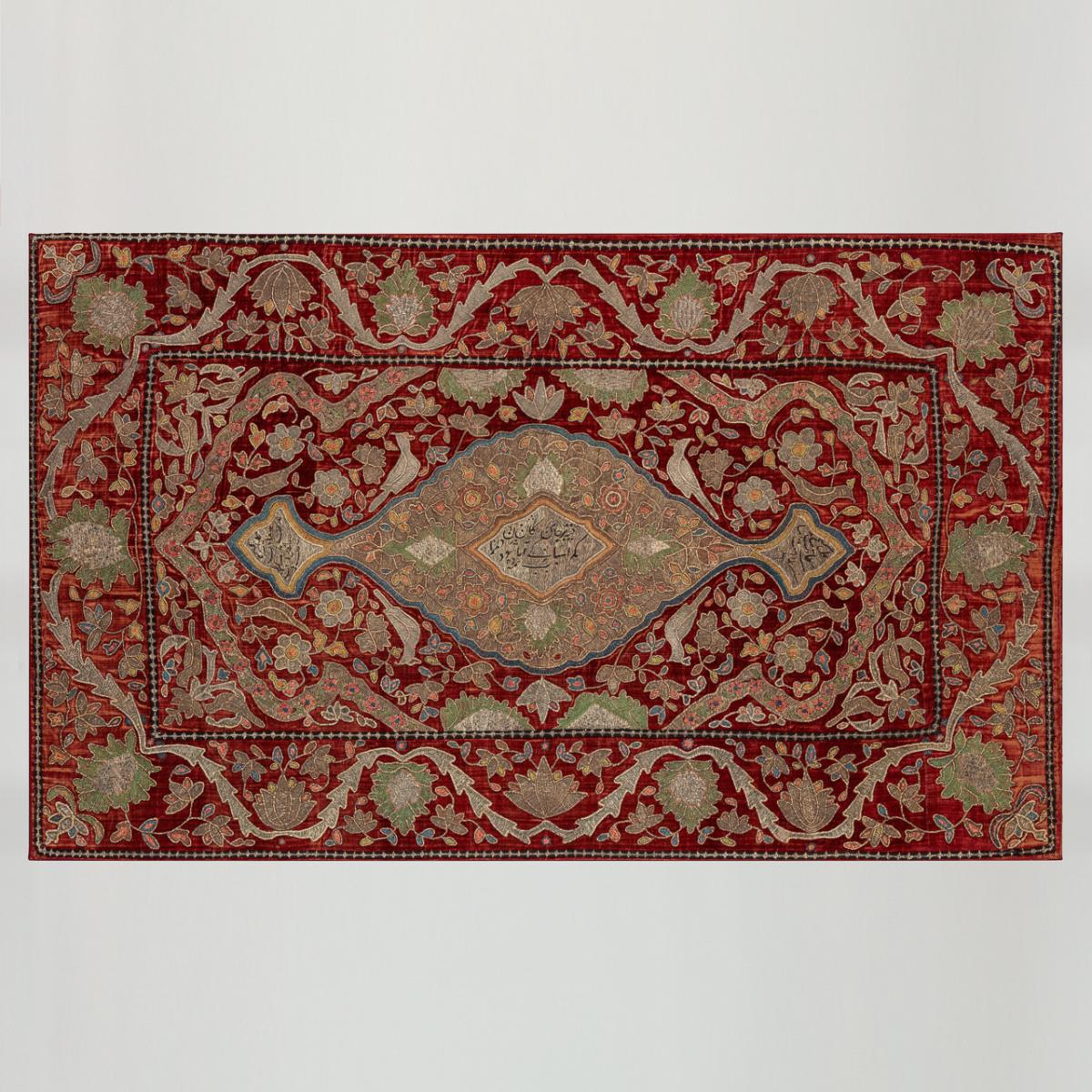
Price on application
This object is eligible for a Certificate of BADA Provenance
The BADA Standard
- Since 1918, BADA has been the leading association for the antiques and fine art trade
- Members are elected for their knowledge, integrity and quality of stock
- Our clients are protected by BADA’s code of conduct
- Our dealers’ membership is reviewed and renewed annually
- Bada.org is a non-profit site: clients deal directly with members and they pay no hidden fees
A Large Qajar Embroidered Panel.
Qajar Iran, 19th century.
Silk and metal thread.
Provenance: From the collection of the Countess Amalia Canonica, from the beginning of 20th century; by inheritance.
83.5cm high, 138cm wide.
This crimson velvet embroidery is adorned with birds and voluptuous flowers. In the borders are undulating vines with heavy leaves and blossoms scroll. In the central field, the lozenge- and leaf-shaped cartouches bear inscriptions in Persian.
The two leaf-shaped cartouches bear the same inscription:
کلید گنج سعادت بدست سلطنت است.
Kilīd-i ganj-i sa’ādat be-dast-i ṣulṭanat ast.
The key of fortune is in the hand of the soverign.
The central lozenge-shape cartouche reads:
تکیه بر جای بزرگان مزن ای دل
مگر اسباب بزرگی همه آماده شود
Takīye bar jāy-e buzurgān mazan ay del, magar asbāb-e buzurgī hameh āmadeh shavad
Greatness cannot be had by words alone, seek ye first the things which make for greatness (verses modelled on Hafez's poetry)
Foil-wrapped, silk and coloured cotton threads are used in the embroidery of this textile. The three-dimensional couching of threads combined with the tactile ground fabric creates a richly textured embroidery. An almost identical item, with the same poetry verses in the central cartouche, is now at Waddesdon Manor (Accession Number: 539).
Comparative material:
Victoria and Albert Museum, London (951-1889); The Textile Museum, Washington, D.C. (1977.37.18)
Reference:
Bier, Carol. Woven from the Soul, Spun from the Heart : Textile Arts of Safavid and Qajar Iran, 16th-19th Centuries. Washington, D.C: Textile Museum, 1987.
The BADA Standard
- Since 1918, BADA has been the leading association for the antiques and fine art trade
- Members are elected for their knowledge, integrity and quality of stock
- Our clients are protected by BADA’s code of conduct
- Our dealers’ membership is reviewed and renewed annually
- Bada.org is a non-profit site: clients deal directly with members and they pay no hidden fees


